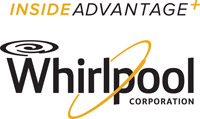Appliance Performance beyond ENERGY STAR®
LEED® for Homes
The U.S. Green Building Council (USGBC) is well known for its popular Leadership in Energy and Environmental Design (LEED) program. This family of green building rating systems includes one specifically for homes updated in 2013 and referred to as LEED for Homes version 4. This comprehensive rating system has six fundamental categories: Location and Transportation, Sustainable Sites, Water Efficiency, Energy and Atmosphere, Materials and Resources, and Indoor Environmental Quality. In addition, there are two optional categories of Innovation and Regional Priority credits that can earn a green home ten points beyond the 100 points available in the first six categories. Within both the Energy and Atmosphere and Water Efficiency categories, the choice is given to follow either a Performance Path option by using a computer-modeled level of energy performance or a Prescriptive Path option by following a checklist of specific items.
 |
A green home under the USGBC LEED for Homes program will benefit from looking at the kitchen and laundry design as part of the overall green basis for the home. Photo courtesy of Whirlpool Corporation |
High efficiency appliances are specifically addressed in the prescriptive path for Energy and Atmosphere with up to 2 points available out of the 38 total in this category. Although they are not specifically addressed in the Water Efficiency category, appliances can certainly play into the calculation of total water use in a building. Therefore, in many cases, both the Performance Path and Prescriptive Path should be looked at to determine which yields the more favorable results towards certification.
The Materials & Resources category is where LEED commonly addresses recycled content and other characteristics of building materials. In LEED for Homes v.4, this section has been updated to take a broader look at the life cycle of building products, but still focuses on the permanent components of a building. Since appliances are not considered permanent parts of the structure, they typically do not get recognized for their contributions in this area.
Conclusion
There are many choices when it comes to specifying and selecting appliances. Appliances manufactured today have higher levels of energy and water efficiency and core product performance than ever before, even those products without an ENERGY STAR® label. On one hand, these advances are being driven by evolving standards and regulations, but also by improvements in the technology that goes into the appliances and improvements in the process of appliance manufacturing. . When highly efficient and properly controlled appliances are included in the design of a green home they can contribute notably to the overall green rating of that home, no matter which certification is used. Architects that make informed choices regarding the appliances used in the homes that they design can take advantage of this latest technology and achieve even higher levels of green residential performance.
Additional Resources:
Commentary on standards from DOE website: http://www1.eere.energy.gov/buildings/appliance_standards/about_appliance_and_equipment.html
American Council for an Energy-Efficient Economy (ACEEE)
Appliance Standards Awareness Project
Association of Home Appliance Manufacturers
NAHB and the ICC 700 National Green Building Standard
US Green Building Council and the LEED rating system
 |
Whirlpool Corporation, the leading manufacturer of major home appliances, brings you Inside Advantage® – innovative products providing efficiency and performance; market insights helping you to create more appealing designs; and targeted services that make doing business with us easier and more profitable. www.insideadvantage.com |








